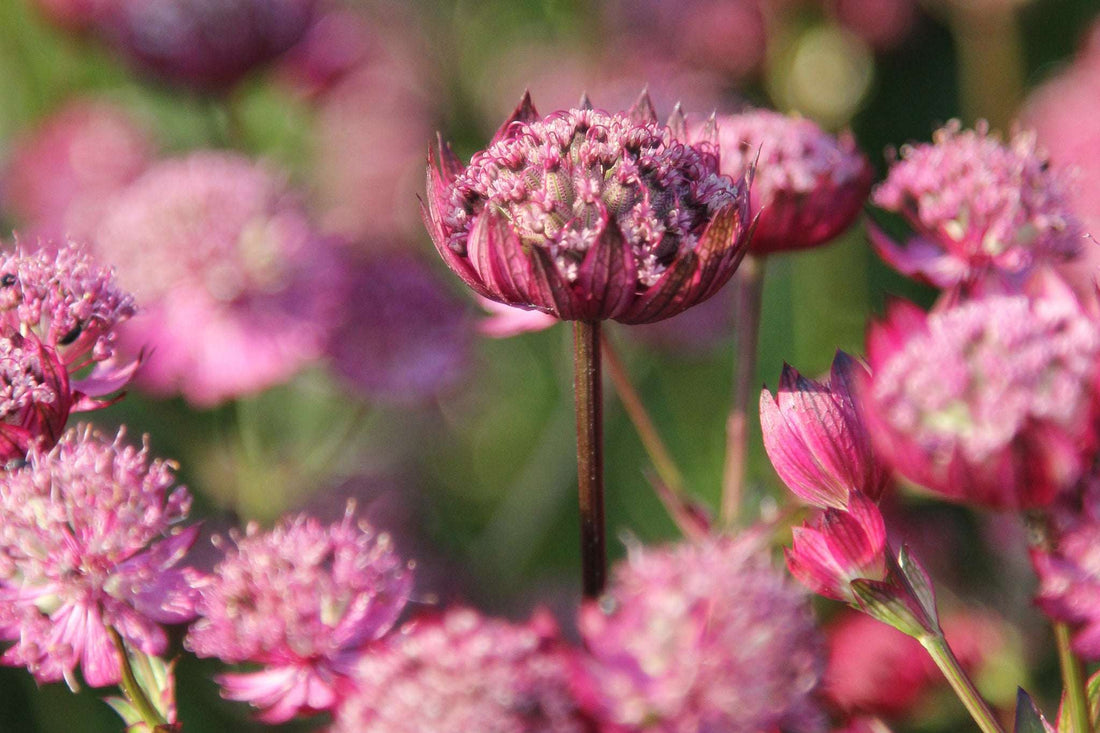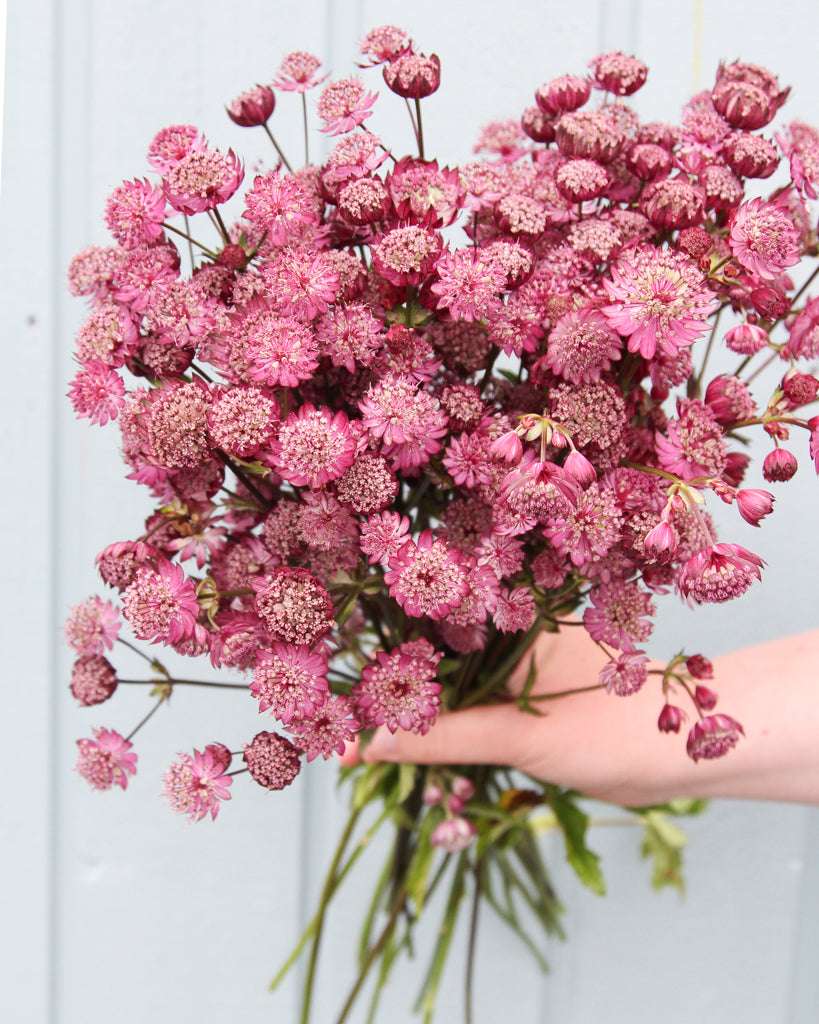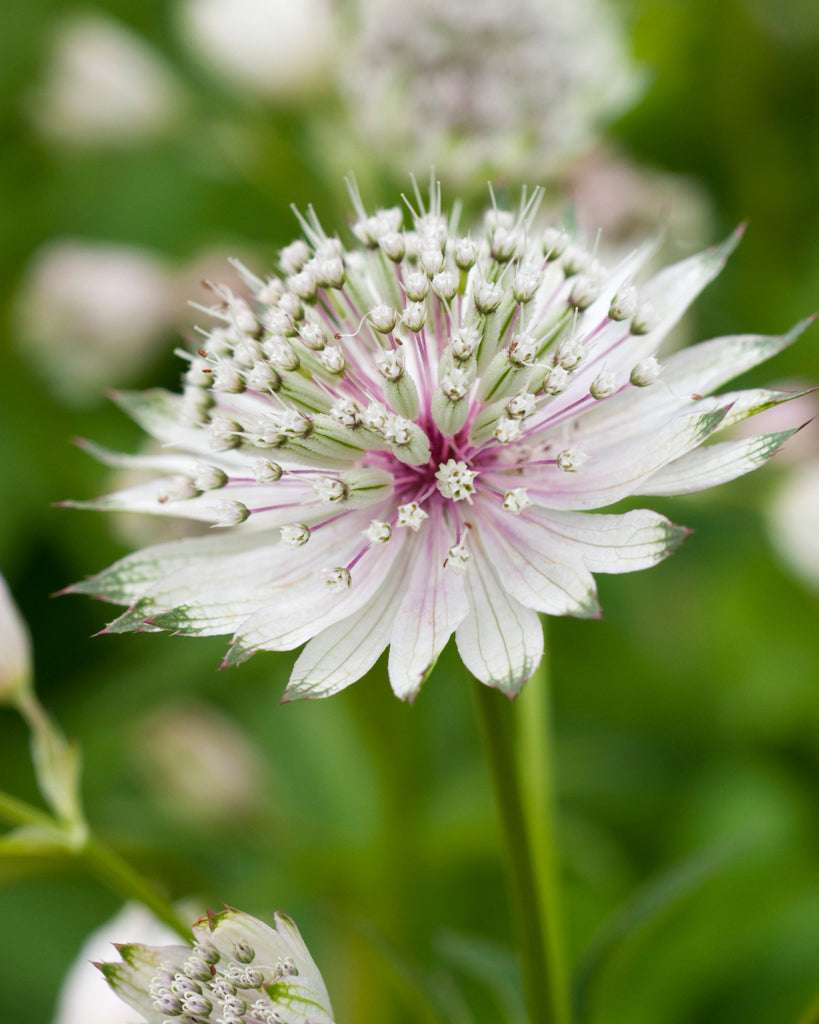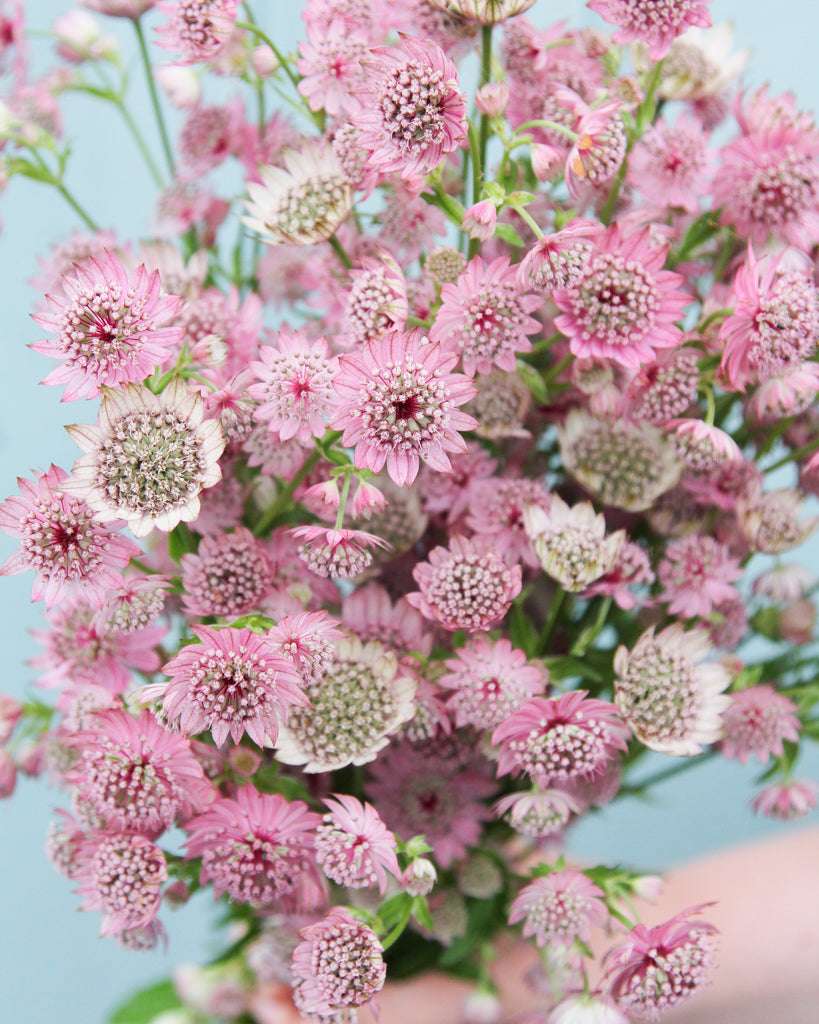Masterworts – the fabulous world of Astrantia
In the interplay of light and shade, this enchanting perennial launches a charm offensive that's impossible to resist. And you shouldn't, otherwise your own garden will miss out on the fabulous world of masterwort!
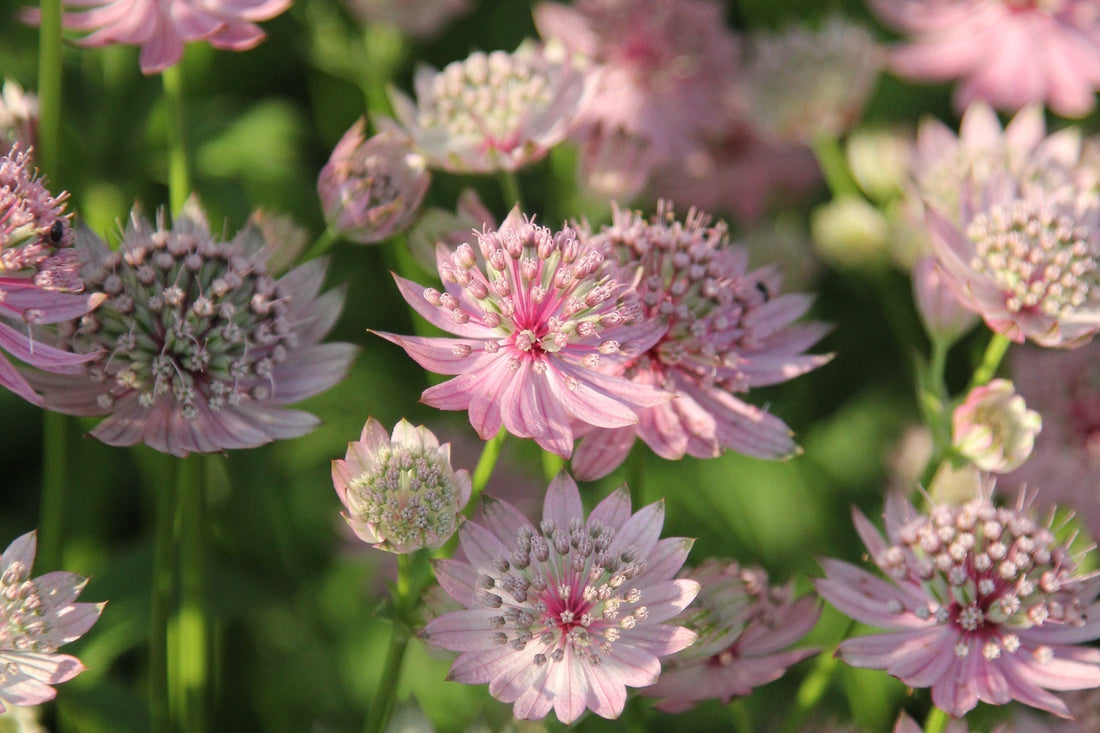
Love at first sight
There are plants that could easily have come from a fantasy or fable world. And the story takes place where sunlight dances back and forth between branches and twigs, speckled on flowers and leaves – in the realm of elves, fairies, goblins, and the like – meaning at the edge of woodland or in the light shade of trees. This is where Astrantias are at home. The first encounter with this charming flowering plant is usually love at first sight and the beginning of a wonderful, long-lasting friendship. Masterworts (botanically Astrantia) not only look enchanting, they are also hardy, winter-resistant perennials.
Wonders of nature
Viewed rather soberly and purely systematically, Astrantias belong to the Apiaceae family. The 40-70 cm tall plants take about two to three years to develop to their full beauty and size. Long, leafless stems emerge from the leafy clumps with deeply lobed foliage; at the end, they branch out and bear a simple, dense umbel as the flower, in abundance, to the delight of every plant lover. This is incredibly tempting to cut a few stems for the vase. Go ahead! Astrantias are wonderful bedding perennials, but also perfect cut flowers, and those who cut liberally will be rewarded with even more blooms. This way, you can admire these enchanting wonders of nature up close, even indoors. The flower heads look like pincushions, composed of countless tiny individual flowers. In England, this is why Astrantias are affectionately called "pincushions."
Beautiful appearance
Plants are adept at visually disguising the fact that their true flowers are only pinhead-sized and inconspicuous. What appears to be a wreath of petals in the masterwort is actually just colored bracts, yet they still pack a punch. The long-lasting false flowers glow in dark red, pink, greenish-white, or pure white and are crisscrossed by delicate leaf veins. Their star-shaped arrangement gave the perennial its name.
Partial shade preferred
Astrantias, especially the Great Masterwort (Astrantia major), have fortunately also captured the imagination of breeders, resulting in a wide variety of valuable varieties. Their flower colors range from various shades of pink and red to plain white. They bloom from early June to July, and under optimal conditions, a second time in August/September. Therefore, regularly remove wilted blossoms and, after the first bloom, give the plants some "food" in the form of mineral fertilizer and compost that matures in autumn. And, of course, the location must be suitable. This popular wild perennial is native to floodplain, ravine, and coniferous forests in large parts of Central Europe, and here in Germany, primarily in the low mountain ranges, where they can be found in mountain meadows and moist mountain forests. In keeping with their natural habitat, masterworts thrive in partial shade on sandy to loamy, humus-rich, nutrient-rich, calcareous soils. If the soil is not too dry, they can also tolerate sun, especially in midsummer. A little tip: If you have sandy soils, add bentonite. This clay mineral improves the soil's water and nutrient retention capacity. If the fabulous Astrantias thrive, they'll seed well. They may not be true to their varieties, but that's easily forgiven.
TEXT: Martina Raabe
